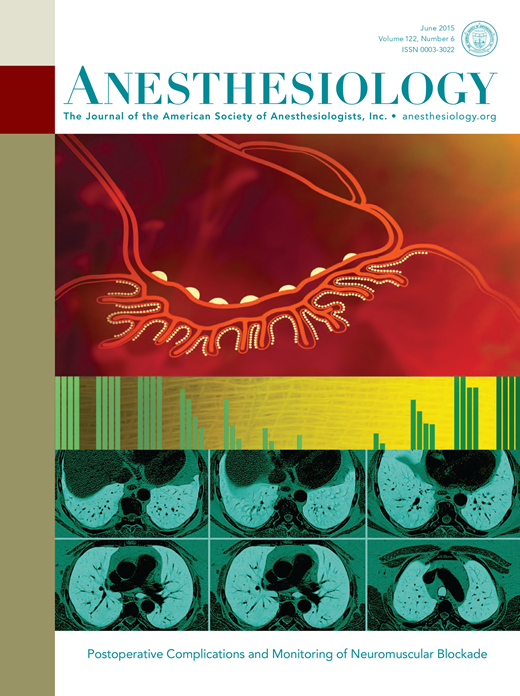Development and external validation of a novel in-hospital mortality model after pediatric congenital heart surgery-a multicenter retrospective cohort study.
IF 9.1
1区 医学
Q1 ANESTHESIOLOGY
引用次数: 0
Abstract
BACKGROUND The applicability of four major traditional in-hospital mortality models in the Chinese setting is unclear due to disease spectrum and population heterogeneity. This study aimed to test the performance of these models in the Chinese setting and to construct and externally validate a novel model. METHODS 21,855 consecutive pediatric patients who underwent congenital heart surgery from January 2015 to December 2021 in Shanghai Children's Medical Center were enrolled. For external validation, we additionally pooled 5,221 consecutive pediatric patients who underwent this surgical treatment from January 2020 to December 2021 in Beijing Fuwai Hospital. The performance of Aristotle Basis Complexity (ABC) score, Risk Adjustment for Congenital Heart Surgery (RACHS)-1 categories, Society of Thoracic Surgeons (STS)-European Association for Cardiothoracic Surgery (STAT) score, and STAT categories was tested. Independent predictors were used to develop a model. The area under the receiver operating characteristic curves (AUROCs) and Brier score were used to examine the model performance. RESULTS The AUROCs were 0.778 for ABC score, 0.685 for RACHS-1 categories, 0.808 for STAT score, and 0.784 for STAT categories. When preoperative covariates were added to four models, the AUROCs improved: ABC score (AUROC=0.860), RACHS-1 categories (AUROC=0.844), STAT score (AUROC= 0.856), and STAT categories (AUROC=0.864). The best-performing model incorporated 6 variables, including age, height, oxygen support, previous cardiac operation, emergency surgery, and STAT categories. The AUROCs and Brier score were 0.864 and 0.00977 in the development cohort, and 0.860 and 0.00654 in the external validation cohort. CONCLUSIONS Four major traditional models were only moderately effective in predicting in-hospital mortality after congenital heart surgery in the Chinese setting. The novel model founded on the STAT categories in combination with preoperative covariates can serve as a useful and effective tool for predicting the risk of in-hospital mortality after congenital heart surgery in the Chinese setting.儿童先心病手术后新型住院死亡率模型的建立和外部验证——一项多中心回顾性队列研究
背景由于疾病谱系和人群异质性,四种主要传统住院死亡率模型在中国的适用性尚不清楚。本研究旨在检验这些模型在中国情境下的表现,并构建和外部验证一个新的模型。方法选取2015年1月至2021年12月在上海儿童医疗中心连续行先天性心脏手术的21855例患儿。为了进行外部验证,我们还汇集了2020年1月至2021年12月在北京阜外医院连续接受该手术治疗的5,221例儿科患者。对亚里斯多德基础复杂性(ABC)评分、先天性心脏手术风险调整(RACHS)-1分类、胸外科学会(STS)-欧洲心胸外科协会(STAT)评分和STAT分类进行测试。独立预测因子被用来建立模型。采用受试者工作特征曲线下面积(auroc)和Brier评分来检验模型的性能。结果ABC评分的auroc为0.778,RACHS-1分类为0.685,STAT分类为0.808,STAT分类为0.784。当术前协变量加入4个模型时,AUROC得到改善:ABC评分(AUROC=0.860)、RACHS-1分类(AUROC=0.844)、STAT评分(AUROC= 0.856)、STAT分类(AUROC=0.864)。表现最好的模型包含6个变量,包括年龄、身高、氧支持、既往心脏手术、急诊手术和STAT分类。发展组的auroc和Brier评分分别为0.864和0.00977,外部验证组的auroc和Brier评分分别为0.860和0.00654。结论四种主要的传统模型对中国先天性心脏手术后住院死亡率的预测仅为中等效果。基于STAT分类和术前协变量建立的新模型可以作为预测中国先天性心脏手术后住院死亡风险的有用和有效的工具。
本文章由计算机程序翻译,如有差异,请以英文原文为准。
求助全文
约1分钟内获得全文
求助全文
来源期刊

Anesthesiology
医学-麻醉学
CiteScore
10.40
自引率
5.70%
发文量
542
审稿时长
3-6 weeks
期刊介绍:
With its establishment in 1940, Anesthesiology has emerged as a prominent leader in the field of anesthesiology, encompassing perioperative, critical care, and pain medicine. As the esteemed journal of the American Society of Anesthesiologists, Anesthesiology operates independently with full editorial freedom. Its distinguished Editorial Board, comprising renowned professionals from across the globe, drives the advancement of the specialty by presenting innovative research through immediate open access to select articles and granting free access to all published articles after a six-month period. Furthermore, Anesthesiology actively promotes groundbreaking studies through an influential press release program. The journal's unwavering commitment lies in the dissemination of exemplary work that enhances clinical practice and revolutionizes the practice of medicine within our discipline.
 求助内容:
求助内容: 应助结果提醒方式:
应助结果提醒方式:


